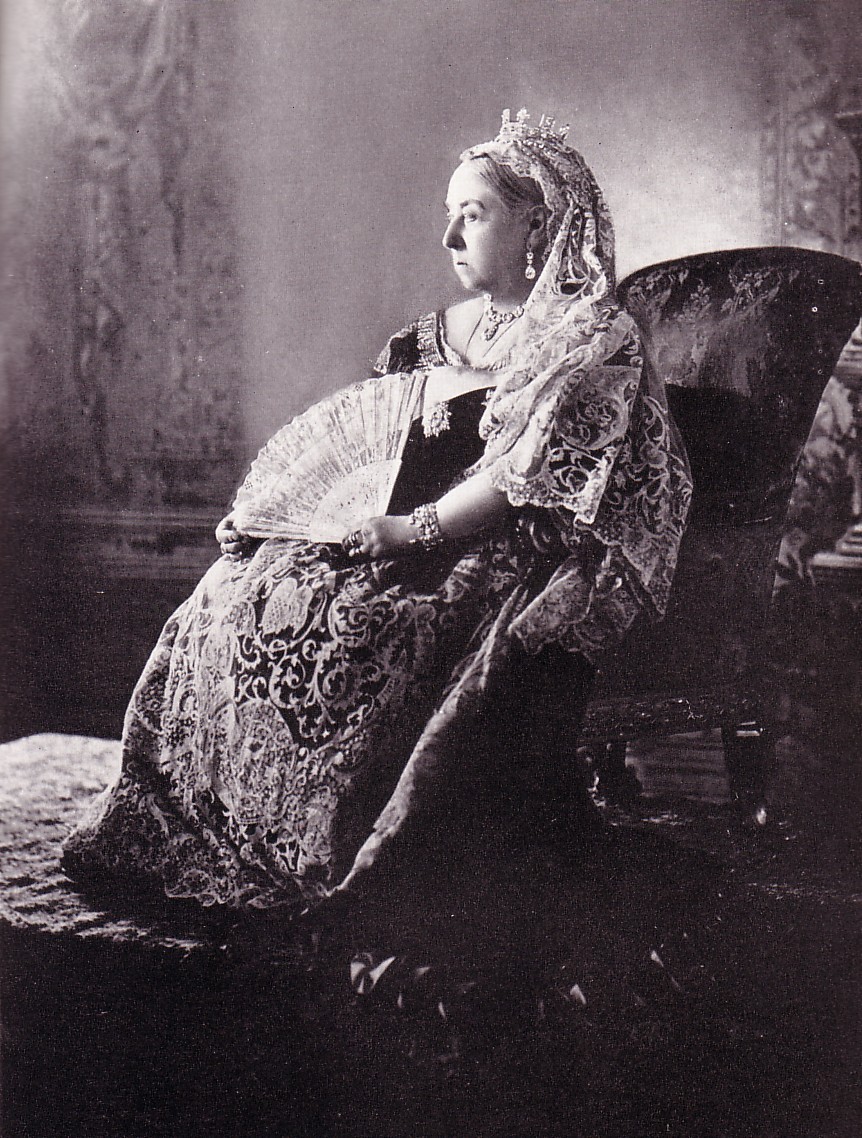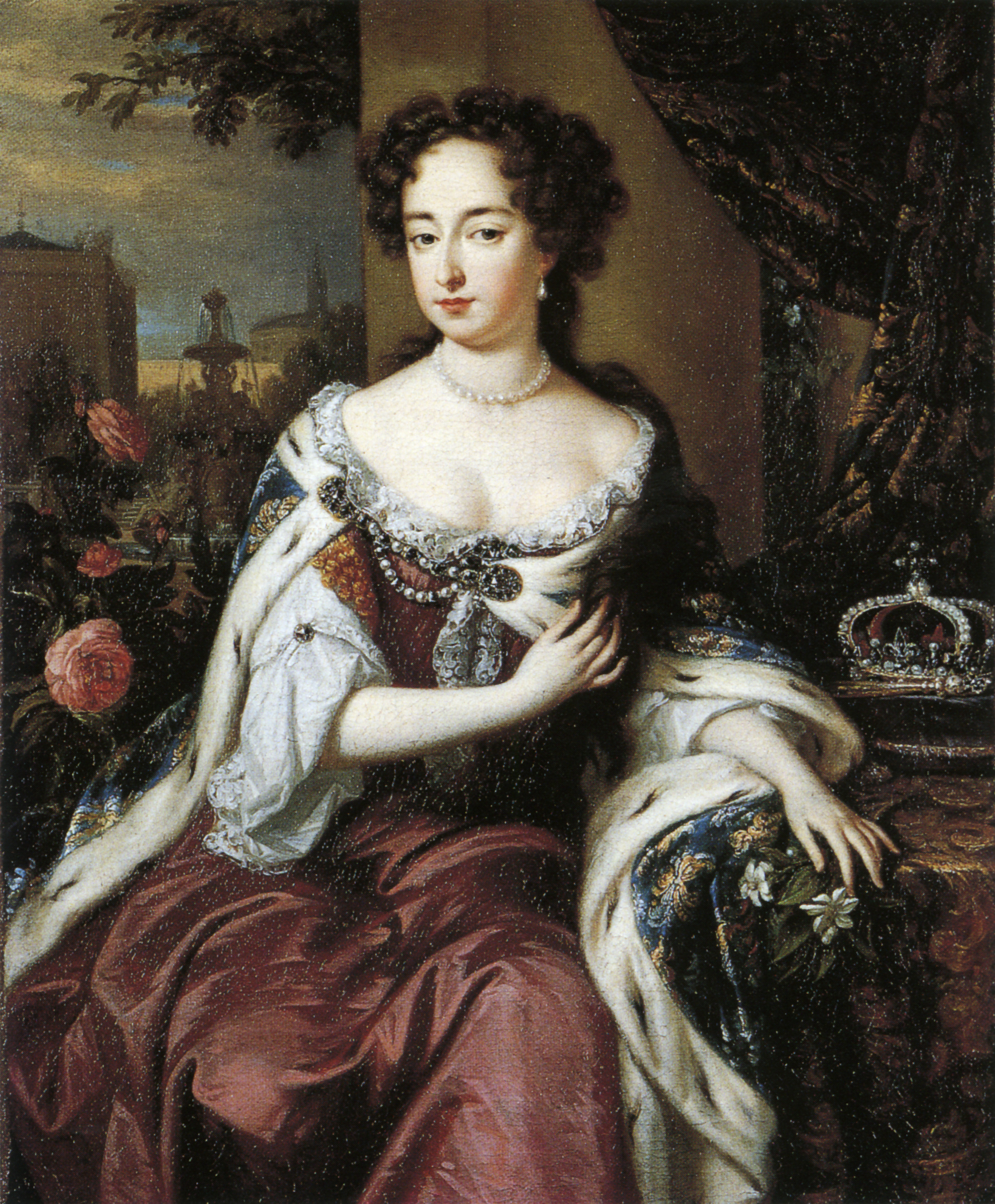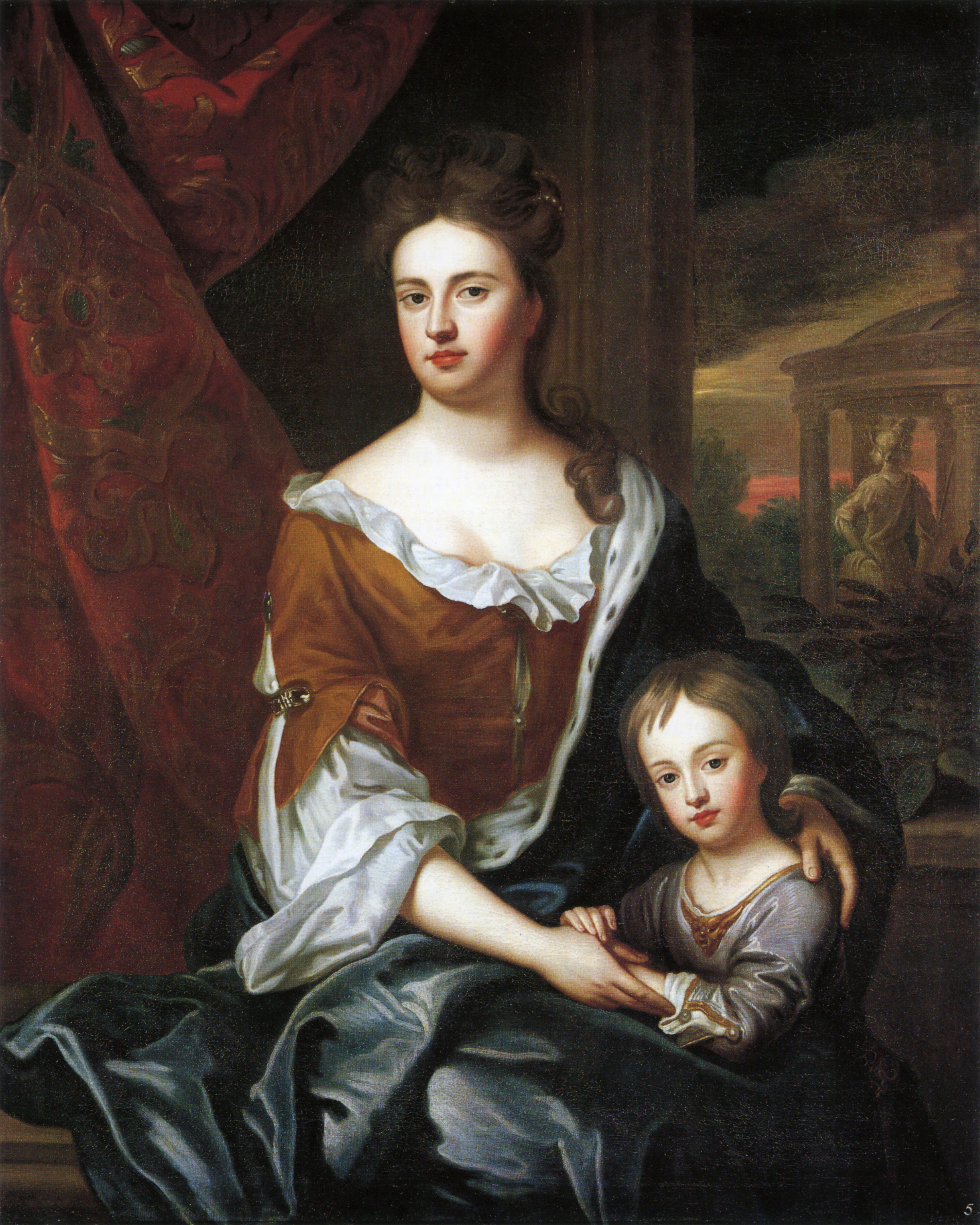 |
By W. & D. Downey (collectionscanada npg.org)
via Wikimedia Commons
|
She’s so famous they named an entire age for her. Towns, provinces, lakes, waterfalls, etc., etc. around the globe (in Africa, Asia, Australia and the Americas!) were given her name. The popular conception of Victoria is that of a staid, matronly old lady who was stubborn and, perhaps, a bit of a prude. These things may all be true—in part—but the real Victoria was also lively and not quite as immune to temptations of the flesh as she might have history believe. Here are ten things you might not know about one of the most famous women in history.
1. Victoria was raised by a single mother.
Victoria’s father, the Duke of Kent, died when she was only eight months old. She was raised, therefore, by her German mother, Victoria of Saxe-Coburg. She was the only child of the Duke although his Duchess had two other children, Charles and Feodora, by her first husband. The elder Victoria was only 17 when her family married her to Charles Prince of Leinengen, who was 23 years older . She became a widow for the first time at 27. When she married the Duke, 19 years her senior, she was overseeing a small German principality on behalf of her young son. After the Duke’s death, she remained in England, although she received little support from the royal family or the government. In fact, she feuded with her brother-in-law, King William IV, and grew increasingly paranoid that her daughter’s life was in danger from the royal family. It was not a pleasant environment for a lonely young girl. Queen Victoria later wrote that, in her childhood, she “did not know what a happy domestic life was.” As soon as she became queen, she made sure that her mother had no authority.
2. She became queen through multiple tragedies.
The Duke of Kent was the fourth son of King George III. All three of his elder brothers should have had many children who would have been ahead of Victoria in line to the throne. (See “
The Royal Baby Race”) The eldest brother, the Prince of Wales (later George IV), hated his wife and only managed to have one child, Princess Charlotte, who died after giving birth to a stillborn son. The Duke of York also was not fond of his wife and they had no children. The Duke of Clarence (later William IV) had 10 little FitzClarences by Mrs. Jordan but his two daughters by his wife died as infants. All of these barren marriages and premature deaths left the path clear for the Duke of Kent. Then, his own premature death from pneumonia secured the throne for his infant daughter. Had he lived longer, he might have fathered sons who would have taken precedence over their older sister in the line of succession. In all, eight people had to die for her to become Queen.
3. Her name wasn’t Victoria.
When she was born, the Prince of Wales was serving as Regent for his father, “mad” King George III. The Regent wasn’t particularly excited about the Duke of Kent’s new child. Recently bereaved by the death of his only daughter and grandchild, he also did not think the Kent child had a chance of succeeding to the throne. He, therefore, was less than thrilled when the parents proposed the rather grandiose name of Georgiana Charlotte Augusta Alexandrina Victoria (after, respectively, the Regent, his dead daughter, one of his sisters, the Emperor of Russia, and the baby’s mother.) As nominal head of the family, he delayed the baby’s christening and refused to allow the proposed name. During the christening, the Archbishop of Canterbury had to ask (with rather more urgency than usual) what the baby would be called. “Alexandrina,” the Regent responded petulantly. The Duke of Kent asked whether she might have a second name, perhaps Elizabeth. The Regent finally allowed her to be named for mother, but only if Victoria came after the Emperor’s name. So, Queen Victoria was called “Drina” as a child and Alexandrina remained her official name until she herself insisted on Victoria.
4. Victoria inherited the throne in her nightie.
At barely 18 years old, Princess Victoria of Kent was awakened at about six o’clock in the morning. Knowing the news she was about to receive—her uncle King William IV’s illness had been no secret—she put on her housecoat and met alone with the Lord Chamberlain and the Archbishop of Canterbury. Despite her extremely casual attire and her tender years, the new Queen quickly asserted herself. She refused to allow her mother to accompany her, she met that day with the Prime Minister and with the Privy Council unattended by any female chaperone, in contrast to the standards of the day. Barely five-foot tall with a tiny, bell-like voice, the new Queen was rapidly establishing herself as a giant among the men of the day.
5. Victoria married her first cousin.The closest father figure in Victoria’s childhood was her maternal uncle, Prince Leopold of Saxe-Coburg, who was also the widower of her tragic cousin, Charlotte, the Regent’s daughter. Leopold had a keen interest in Victoria’s advancement, seeing himself as a protector of her claims to the throne that should have gone to his own child. Even after securing another throne for himself—as the first King of the new Kingdom of Belgium—Leopold maintained a strong influence on the young Victoria. He decided that the Coburgs should try to keep the British throne in their family and advocated a marriage between his sister’s daughter, Victoria, and his brother’s son, Albert. At first, 17-year-old Victoria was not impressed with 16-year-old Albert. However, she soon changed her mind. She wrote to Albert’s father, her Uncle Ernest, that Albert, “possessed every quality” to make her “perfectly happy.” Two years later, after becoming queen, she proposed to Albert, whom she found “beautiful” and “fascinating.” The arranged marriage became a devoted love match.
6. Victoria enjoyed her sex life. . .
From the moment of her engagement, Victoria indulged in kissing Albert “again and again.” She not only relied on Albert’s advice in their public lives together, and promoted nearly any project or plan he proposed, but she also enjoyed a quite intense physical relationship him. At a time when many young married women were admonished to endure their marital duty (“close your eyes and think of England”), Victoria clearly did not have to rely on patriotism to inspire her in the bedroom. When the death of his father required Albert to return briefly to Germany without her, Victoria bemoaned her uncomfortably chaste state to their Uncle Leopold, saying the thought of being separated for even one night was “quite dreadful.” Even more bluntly, she later wrote her oldest daughter about being “clasped and held tight in the sacred Hours at Night when the world seemed only to be ourselves.” Imagine your own mother saying that!
7. But not the consequences.
Despite her chemistry with Albert, Victoria was openly unhappy to find herself pregnant again and again and again. She had hoped to have a few years alone with her handsome husband, but their first child was born barely nine months after the wedding and the second just 12 months after that. By their 17th anniversary, the couple had nine children. While Albert proved an attentive father, in many ways the opposite of the stereotypical Victorian father, Victoria was a rather demanding mother. Albert once even told that it was hard to be friends with her children if she had just been chastising them,. She did not like infants and even wrote that two of her babies were “too frightful.” She wrote that “as a rule children are a bitter disappointment.” Even as a grandmother, she could be less than affectionate; after the birth of her fourteenth grandchild, she wrote that the birth of yet another “little red lump” was “a very uninteresting thing.” She later clarified that she admired “pretty children” although she did not like to have too many around her. Early in her marriage, she had written that a large family would be “a hardship and inconvenience”—an insightful statement from the mother of nine and grandmother of 42. However, she was keenly interested in their education and in their personal lives and was almost always willing to help them out of a scrape.
8. Victoria was a single mother.
Alas, one of the reasons she was so burdened by her maternal role, or so she said, was because she had to head such a huge family entirely alone. Like her mother before her, Victoria became a single mother; Albert died of typhoid at a tragically young age. Only 42 at the time, Victoria still had seven children at a home, aged four to 18. Her eldest daughter was married and living in Germany. Her eldest son, Bertie, was in college. In fact, she blamed Bertie for Albert’s death, believing that his fatal illness had been contracted when he rushed to Cambridge to chastise Bertie for a sexual indiscretion. Although Albert had been ill for some time prior to this and had been involved in other stressful activities—including his successful intervention in the Trent Affair of the American Civil War—Victoria never forgave their eldest son. She also clung to her youngest child, Beatrice, allowing her to marry only when the prospective bridegroom agreed to live with his mother-in-law for the rest of her life.
9. She was the grandmother of Europe.
By the time Victoria died in 1901, she had 96 descendants, some of whom had predeceased her. Among her children and grandchildren were the crowned heads of England, Germany, Greece, Norway, Russia, Rumania, Spain and Sweden. All of the reigning houses in Europe are descended from her except the Monaco, the Netherlands and Belgium. As of September 1, 2009, according to the Monarchies of Europe website, there have been 1,053 descendants of Queen Victoria, including 828 who are still living. The number would be even higher except that many cousins married cousins. In fact, Queen Elizabeth II and her husband Prince Philip are both her great-great grandchildren. She is descended through Victoria’s oldest son and he through her second daughter.
10. We’ll never know all of her secrets.
Although Victoria was a prolific writer, (it is estimated she wrote 60 million words!) documenting her long life through thousands of letters and journal entries, we have not inherited this vast resource in tact. Victoria herself often edited earlier journals. More crucially, her youngest daughter Beatrice transcribed her journals after Victoria’s death, electing to omit or revise passages she felt unworthy of her mother’s heritage and then burning the originals. Although an earlier copy exists of Victoria’s journals prior to Albert’s death in 1861, the four decades of her widowhood have been whitewashed by her well-meaning daughter. Among the topics that may not have survived Princess Beatrice’s editorial work is the true nature of Victoria’s relationship with her Highland servant, John Brown. Speculation at the time alleged that Victoria had an improper, even sexual, relationship with him, and her sharpest critics called her “Mrs. Brown.” That unusual friendship (or more!) is the subject of the excellent film for which Judi Dench earned an Oscar nomination in the title role.





